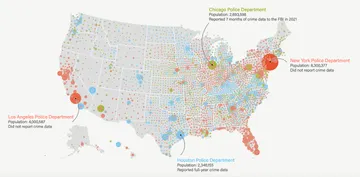The anger. The numbness. The flashbacks. Mass shootings such as the one in San Bernardino, Calif. this week can haunt, for years, the police officers who are often first to the scene. It is a trauma that Sergeant A.J. DeAndrea of Arvada, Colo. knows firsthand. He was one of the first to enter Columbine High School in 1999, searching for the gunmen who killed 13 people and injured 21 more.
“When you walked out of the building, it was like, ‘Holy shit. What did we just experience?’” he said of Columbine. “It was surreal. People didn’t know what to say … you felt like you were on an island.” Though he said it never got to the point where he could not do his job, images of victims would appear in his mind without warning long after the shooting. To this day, an unexpected trigger can resurface a memory. “Anniversaries are always hard. They get easier in time, but these things stay with you,” he said.
Cops are trained to confront tense and life-threatening events every day, but the sheer scale of mass shootings, like the one in San Bernardino on Wednesday — in which 14 people were killed, and 21 wounded, making it the deadliest mass shooting in nearly three years — are different. “These incidents have the power to render a person nearly defenseless emotionally,” said police psychologist Jack Digliani.
The ensuing media coverage and national attention can also make it harder for officers to move on. “The media was so brutal. All of the so-called experts coming out saying how we could have done things better,” DeAndrea said. “After the first day, I quit watching.”
In San Bernardino, soon after police cleared the crime scene, a group of mental-health professionals arrived at the San Bernardino Police Department to help officers process what they had just seen.
“We do a lot of psychological first aid,” said Nancy Bohl-Penrod, director of the Counseling Team International, a private practice that responds to crisis incidents in Southern California. Bohl-Penrod and her team — comprised of chaplains, counselors, and fellow officers — began preparing officers for what might lie ahead: difficulty sleeping, hypervigilance, anger, isolation, and flashbacks. “There are parts of the event that get stuck in your memory. It keeps replaying on a loop: you smell it and see it and hear it.”
Former Newtown police officer Thomas Bean was diagnosed with posttraumatic stress disorder after the Sandy Hook Elementary School shooting in Newtown, Conn., in which 20 children and six adults were killed. He sued the police department for disability benefits (the debate over whether police should receive workers compensation for PTSD is ongoing in several states). Bean said he drank and thought about cutting himself after the image of dead children was seared in his brain.
Former Aurora police chief Daniel Oates experienced how mass shooting can shake an entire police department. One hundred and twenty-six officers were working the night that James Holmes killed 12 and injured 70 in a movie theater in Colorado. “What the whole organization went through was cataclysmic,” said Oates, who left Aurora in 2014 to become chief of police in Miami Beach. “The cops that weren’t there were tremendously traumatized because there was a sense of, ‘I wasn’t there to contribute.’”
Oates brought in police psychologist John Nicoletti to meet with any officer who wanted to talk. Sergeants organized trips to the hospital for police to meet the surviving moviegoers they had helped. Eight days after the shooting, they gathered every officer working that night to listen to each radio transmission and walk through exactly what happened. While reliving the shooting can be traumatic, it helps officers see the big picture, Nicoletti said. Without it, they can spiral, wondering what they might have done differently to save more lives.
Even three years later, during Holmes’ trial, many police officers broke down in tears remembering the bodies they carted to the hospital. “Hopefully weeks or months down the road, they’ve moved to where it’s not consuming and it becomes more of a memory,” Nicoletti said. “But there will be trigger events that wake up the ghosts.”
With each mass shooting (and there have been many this year) police chiefs are thinking more about how to prepare their officers for such an event. “Fifteen years ago, there was no active shooter training, there was no mass casualty training,” said Dan Phillips, chief of crisis services for the U.S. Marshals Service. “That’s a huge shift in law enforcement.”
These programs instruct officers on how to approach an active shooter, as well as how to take care of themselves in the weeks and months after the event. “We let them know there will be peer support and mental health professionals available. We tell them to stay away from the TV and media as much as possible,” Phillips said. “We prepare them as best we can that whatever you’re feeling afterwards is normal — it’s the event itself that’s abnormal.”
Departments that have weathered mass shootings hope to help other cities prepare for the worst. A group of police chiefs is working with the National Alliance on Mental Illness to compile a manual for police departments on how to assist officers responding to high casualties and to deal with the resulting trauma.
“There’s this perverse and growing fraternity of chiefs who have been through this,” Oates said. “Sandy Hook, Oak Creek, Wisconsin, now we’ve got Chatanooga, San Bernardino, Colorado Springs … it just goes on and on.”
